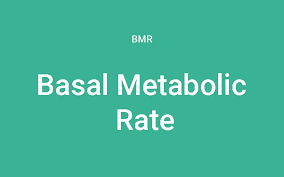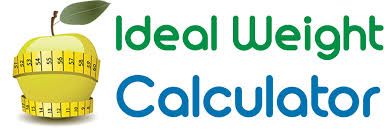Are you looking for an easy way to measure your aerobic capacity and overall fitness level? Using a VO2 max calculator, also known as a VO2 calculator can provide a rough estimate of your maximal oxygen consumption. By inputting factors such as your age, sex, weight, and resting heart rate, a V02 max calculator can estimate your VO2 max in milliliters of oxygen per kilogram of body weight per minute (ml/kg/min). While a VO2 max calculator can be a helpful tool in assessing your fitness level, it’s important to remember that it’s not a substitute for a professional fitness assessment. By incorporating regular exercise and other lifestyle habits into your routine, you can improve your VO2 max and achieve optimal health and fitness.
VO2 Max Calculator
Result:
What is VO2 max?
Are you an aspiring athlete, fitness enthusiast, or just someone looking to improve their health? Understanding your VO2 max can be the key to unlocking your true potential. This comprehensive guide will explain what VO2 max is, why it matters, and how you can improve your aerobic capacity for peak performance.
VO2 max, or maximal oxygen consumption, is a metric that measures the maximum amount of oxygen your body can utilize during intense exercise. In simpler terms, it’s an indicator of your aerobic capacity—the efficiency with which your heart, lungs, and muscles can work together to deliver oxygen to your body during physical activity.
The Significance of VO2 Max
VO2 max, or maximum oxygen consumption, is the gold standard for measuring an individual’s aerobic fitness and endurance. It represents the maximum amount of oxygen your body can utilize during intense exercise, typically expressed in milliliters of oxygen per minute per kilogram of body weight (ml/min/kg). Here’s why VO2 max is of paramount importance:
1. Cardiovascular Health
VO2 max is a powerful indicator of your cardiovascular health. A higher VO2 max suggests that your heart, lungs, and circulatory system efficiently transport oxygen to your muscles, promoting heart health and reducing the risk of cardiovascular diseases.
2. Endurance and Stamina
Your VO2 max is closely linked to your endurance capacity. Athletes and fitness enthusiasts with a higher VO2 max can sustain physical effort for longer durations, making it a key determinant of athletic performance.
3. Fitness Assessment
VO2 max serves as a reliable fitness benchmark. Tracking changes in your VO2 max over time can help you gauge the effectiveness of your training regimen and set realistic fitness goals.
4. Personalized Training
Knowing your VO2 max can help tailor your exercise routine. It allows you to train in specific heart rate zones, ensuring you maximize your workout’s cardiovascular benefits.
Measuring VO2 Max – VO2 Max Test
Various tests are used to assess an individual’s VO2 max, each with its own advantages and applications. Here are some of the most common tests related to VO2 max:
Treadmill Test: The treadmill VO2 max test is one of the most widely used methods. It involves running or walking on a treadmill while gradually increasing the speed and incline until the individual reaches their maximum effort or exhaustion. During the test, oxygen consumption, carbon dioxide production, and heart rate are monitored.
Cycling Test: Similar to the treadmill test, the cycling VO2 max test is performed on a stationary bike. Participants pedal at increasing resistance levels until they reach their maximum effort. Oxygen consumption, carbon dioxide production, and heart rate are measured.
2.4 km (1.5-mile) Run Test: This is a simple field test often used to estimate VO2 max. Participants run 1.5 miles as fast as they can, and their time, age, and gender are used in a formula to estimate their aerobic capacity.
Submaximal Tests: Submaximal tests are less intense and do not require participants to reach their maximum effort. Instead, they involve exercises like walking, jogging, or cycling at submaximal intensities while monitoring heart rate and oxygen consumption. The results are used to estimate VO2 max without pushing individuals to exhaustion.
Multistage Fitness Test (Beep Test): The beep test is commonly used for assessing aerobic fitness in groups or athletes. Participants run back and forth between two points (marked by beeps) at progressively increasing speeds. The test continues until individuals can no longer maintain the required pace.
Step Test: The step test involves stepping up and down from a platform at a specific rate for a set period. It measures heart rate response to exercise and is often used in clinical settings to estimate VO2 max.
Maximal Effort Rowing Test: Rowers and individuals interested in rowing can undergo a maximal effort rowing test. It involves rowing at maximum intensity until exhaustion while monitoring oxygen consumption and heart rate.
Swimming Tests: Swimming tests can be used to estimate VO2 max for swimmers. These tests involve swimming at increasing intensities while monitoring oxygen consumption.
Cycle Ergometer with Arm Crank: This test is suitable for individuals with lower limb disabilities. It combines cycling with arm cranking to measure aerobic capacity.
Incremental Running Test: In this test, participants run on a treadmill at gradually increasing speeds or inclines until they reach exhaustion. It is commonly used in sports science and research settings.
Balke Test: The Balke test involves running on a treadmill at a constant speed while the incline is increased every minute until the participant reaches exhaustion. It is often used in clinical settings.
Astrand-Rhyming Test: This is a submaximal test that estimates VO2 max based on heart rate response to steady-state cycling exercise.
Each of these tests serves a specific purpose and is chosen based on factors such as the individual’s fitness level, equipment availability, and the test’s objectives. VO2 max testing is valuable for athletes, fitness enthusiasts, and healthcare professionals to assess aerobic capacity, tailor training programs, and monitor progress.
VO2 Max Calculator – How to Calculate VO2 Max?
While a laboratory-based VO2 max test provides the most accurate measurement, you can estimate your VO2 max using a VO2 max calculator. Here’s how it works:
Gather Data: You’ll need information such as age, gender, weight, and exercise performance data. Some calculators may also require your resting heart rate.
Input Data: Enter the required data into the calculator. You may also need to provide exercise performance data, such as your running time for a specific distance.
Calculation: The calculator uses mathematical formulas or algorithms to estimate your VO2 max based on the provided information.
Interpretation: The calculator typically provides your estimated VO2 max in ml/min/kg. This value represents your aerobic fitness level. Higher numbers indicate better aerobic fitness.
Tracking Progress: You can use the calculator periodically to track changes in your estimated VO2 max as you engage in regular exercise and training.
How to calculate VO2 max?
Let’s do an example calculation. For this purpose, we will use the one-mile walk test:
First, do the walking test
Measure your time and pulse. Let’s say that
walk time = 15 minand Pulse (beats/min):70Then, enter this data into the calculator. Moreover, additional information about your sex, age, and weight.
sex = male,age = 30 years,weight = 70 kgRead out your result.
VO2 max = 13.4 ml/kg/min.

VO2 Max Exercises
VO2 max exercises are those that challenge your cardiovascular system and elevate your heart rate to increase oxygen consumption during physical activity. Here are some effective exercises to incorporate into your fitness regimen:
1. Running
Running is a classic VO2 max exercise that can significantly improve your aerobic capacity. Whether you’re a beginner or an experienced runner, interval training, hill sprints, or tempo runs can help you push your limits and elevate your VO2 max.
2. Cycling
Cycling, especially at high intensities or uphill, is an excellent way to enhance your cardiovascular fitness. Consider incorporating interval cycling sessions, hill climbs, or spin classes into your routine.
3. Swimming
Swimming engages multiple muscle groups and provides an excellent aerobic workout. Swim laps at varying speeds, perform high-intensity interval training (HIIT) in the pool, or join a swim club to challenge your cardiovascular system.
4. High-Intensity Interval Training (HIIT)
HIIT workouts involve short bursts of intense exercise followed by brief recovery periods. These workouts are highly effective in boosting VO2 max. You can incorporate exercises like jumping jacks, burpees, or sprints into your HIIT routine.
5. Rowing
Rowing machines offer a full-body workout and are particularly effective in improving aerobic capacity. Try rowing at varying intensities and distances to challenge your cardiovascular system.
6. CrossFit
CrossFit workouts often include a combination of high-intensity exercises that target strength and aerobic capacity simultaneously. They can be an excellent way to enhance your overall fitness and VO2 max.
Tips for Improving Your VO2 Max
In addition to incorporating VO2 max exercises, consider these tips to optimize your aerobic capacity:
1. Consistency is Key
Consistent training is essential for improving your VO2 max. Aim for at least 150 minutes of moderate-intensity aerobic exercise per week, as recommended by health guidelines.
2. Gradual Progression
Gradually increase the intensity, duration, or frequency of your workouts. Progressive overload is crucial for challenging your cardiovascular system and making improvements.
3. Mix Up Your Workouts
Variety in your exercise routine can prevent plateaus and keep your workouts engaging. Incorporate a mix of aerobic activities, strength training, and flexibility exercises into your schedule.
4. Monitor Your Heart Rate
Utilize heart rate monitors to stay within target heart rate zones during aerobic workouts. Training in the correct zone ensures you’re working at an intensity that promotes VO2 max improvement.
5. Proper Nutrition
Fuel your body with a balanced diet that includes complex carbohydrates, lean proteins, healthy fats, and an array of fruits and vegetables. Proper nutrition supports your energy needs for aerobic exercise.
6. Hydration
Stay adequately hydrated before, during, and after your workouts. Dehydration can hinder your performance and impact your VO2 max.
7. Rest and Recovery
Allow your body sufficient time to recover between intense workouts. Overtraining can lead to fatigue and hinder VO2 max improvements.
8. Seek Professional Guidance
If you’re new to aerobic training or have underlying health concerns, consult with a fitness professional or healthcare provider. They can help you create a safe and effective workout plan tailored to your goals.
Factors affecting the VO2 max value
VO2 max is a crucial component of your fitness level, reflecting your body’s ability to utilize oxygen during physical activity. However, your VO2 max is influenced by several factors, both internal and external. This comprehensive guide will explore the various factors that affect your VO2 max and how you can optimize your aerobic capacity for improved fitness and overall health.
- Genetics
Your genetic makeup plays a significant role in determining your natural aerobic capacity. Research has shown that up to 50% of the variation in VO2 max among individuals can be attributed to genetic factors. Some people are born with a higher aerobic capacity, while others may need to work harder to improve their VO2 max through targeted training.
- Age
VO2 max generally peaks in your 20s and declines gradually as you age. The decline in VO2 max is primarily due to age-related changes in the heart, lungs, and muscles, which reduce their ability to deliver and utilize oxygen during exercise. However, regular aerobic exercise can help slow down this decline and maintain your aerobic capacity well into your senior years.
- Gender
Males tend to have a higher VO2 max than females, mainly due to differences in body composition and muscle mass. Men typically have more muscle mass and higher levels of testosterone, which enhances their aerobic capacity. However, women can still improve their VO2 max through targeted training and lifestyle modifications.
- Altitude
Living and training at higher altitudes can lead to increased VO2 max due to the body’s adaptation to lower oxygen levels. At high altitudes, the body produces more red blood cells to compensate for the lower oxygen concentration, leading to improved oxygen transport and utilization. However, the benefits of altitude training may be temporary, and returning to lower altitudes may result in a decrease in VO2 max.
- Training
Regular aerobic exercise is the most effective way to improve your VO2 max over time. The type, frequency, and intensity of exercise can all influence your aerobic capacity. High-intensity interval training (HIIT) and continuous moderate-intensity exercise have both been shown to improve VO2 max. However, it’s essential to gradually increase the intensity and duration of your workouts to avoid injury and burnout.
- Other Factors
Other factors that can affect your VO2 max include body weight, diet, smoking, and alcohol consumption. Excess body weight can negatively impact your aerobic capacity, as it increases the workload on your heart and lungs. A diet rich in nutrients, especially iron, can help optimize your oxygen transport and utilization. Smoking and alcohol consumption can impair your lung function and reduce your aerobic capacity.
Your VO2 max is influenced by various factors, including genetics, age, gender, altitude, and training. However, with targeted training and lifestyle modifications, you can optimize your aerobic capacity for improved fitness and overall health. By incorporating regular aerobic exercise, maintaining a healthy weight, and avoiding harmful habits such as smoking and excessive alcohol consumption, you can unlock your potential and reach new heights in your fitness journey.
VO2 max for age various groups
We will explore the impact of age on VO2 max in various age groups and how you can maintain and improve your aerobic capacity at any age.
- Children and Adolescents
VO2 max in children and adolescents tends to be lower than in young adults due to their smaller body size, lower muscle mass, and less developed cardiovascular system. However, regular exercise and physical activity can improve their aerobic capacity over time. Children and adolescents should aim for at least 60 minutes of moderate-to-vigorous physical activity per day, which can include activities such as running, swimming, cycling, and sports.
- Young Adults
VO2 max in young adults generally peaks in their mid-20s and declines gradually as they age. However, regular exercise and physical activity can help maintain and improve their aerobic capacity well into their senior years. Young adults should aim for at least 150 minutes of moderate-intensity or 75 minutes of high-intensity aerobic exercise per week, in addition to strength training and flexibility exercises.
- Middle-Aged Adults
VO2 max in middle-aged adults tends to decline gradually with age due to changes in the heart, lungs, and muscles. However, regular exercise and physical activity can help slow down this decline and maintain their aerobic capacity. Middle-aged adults should aim for at least 150 minutes of moderate-intensity or 75 minutes of high-intensity aerobic exercise per week, in addition to strength training and flexibility exercises.
- Seniors
VO2 max in seniors tends to be lower than in young adults due to age-related changes in the heart, lungs, and muscles. However, regular exercise and physical activity can help improve their aerobic capacity and overall health. Seniors should aim for at least 150 minutes of moderate-intensity or 75 minutes of high-intensity aerobic exercise per week, in addition to strength training and flexibility exercises. Older adults should also consider low-impact activities such as walking, cycling, swimming, and yoga to reduce the risk of injury.
How is the VO2 max value related to the anxiety level?
Anxiety is a common mental health condition that affects millions of people worldwide. While many factors contribute to anxiety, recent research has shown that aerobic exercise, and specifically VO2 max, may be an effective tool in managing anxiety symptoms. This comprehensive guide will explore the connection between VO2 max and anxiety, and how exercise can be incorporated into your routine for optimal mental and physical health.
- Understanding VO2 Max
VO2 max is a measure of your aerobic capacity, reflecting your body’s ability to utilize oxygen during physical activity. A higher VO2 max indicates that your body is efficient at delivering oxygen to your muscles during exercise, leading to improved endurance, faster recovery times, and reduced risk of various health problems.
- The Connection Between VO2 Max and Anxiety
Recent research has suggested that exercise can have a positive impact on anxiety symptoms, and that VO2 max may play a role in this effect. One study found that individuals with higher VO2 max had lower levels of anxiety compared to those with lower VO2 max. This may be due to the mood-enhancing effects of exercise, as well as the physiological changes that occur during aerobic exercise, such as increased blood flow and oxygen delivery to the brain.
- Exercise as a Tool for Managing Anxiety
Aerobic exercise, such as running, cycling, swimming, or using a treadmill or stationary bike, can be an effective tool in managing anxiety symptoms. Regular exercise has been shown to reduce stress, improve mood, and increase feelings of well-being. It’s important to start slowly and gradually increase the intensity and duration of your workouts to avoid injury and burnout. Even a short 10-15 minute workout can provide immediate relief from anxiety symptoms.
- Incorporating Exercise into Your Routine
Incorporating exercise into your routine can be challenging, especially if you’re dealing with anxiety. However, there are several strategies that can help make exercise more manageable and enjoyable. These include finding an exercise buddy or group, setting realistic goals, choosing activities that you enjoy, and experimenting with different types of exercise to find what works best for you. It’s also essential to prioritize self-care, including getting enough sleep, eating a healthy diet, and avoiding harmful habits such as smoking and excessive alcohol consumption.
Exercise, and specifically VO2 max, can be an effective tool in managing anxiety symptoms and improving overall mental and physical health. By incorporating regular aerobic exercise into your routine, you can reduce stress, improve mood, and increase feelings of well-being. Remember to start slowly and gradually increase the intensity and duration of your workouts, and to prioritize self-care for optimal results. With the help of a healthcare provider or mental health professional, you can develop a plan to manage your anxiety and improve your overall quality of life.
What is the impact of the V02 max value on the immune system?
Understanding the Immune System
The immune system is a complex network of cells, tissues, and organs that work together to protect the body against pathogens and other foreign invaders. A healthy immune system is essential for optimal health and wellness, as it helps prevent infections, reduce inflammation, and promote healing.
The Link Between VO2 Max and Immune System Health
Recent research has suggested that VO2 max may be linked to immune system health. Studies have found that individuals with higher VO2 max tend to have stronger immune function, lower levels of inflammation, and reduced risk of various diseases, including infections and cancer. This may be due to the anti-inflammatory and antioxidant effects of exercise, as well as the increased circulation of immune cells throughout the body.
Exercise as a Tool for Boosting Immune System Health
Regular exercise, and specifically aerobic exercise, can be an effective tool in boosting immune system health. Exercise has been shown to increase the circulation of immune cells, reduce inflammation, and improve overall immune function. It’s important to start slowly and gradually increase the intensity and duration of your workouts to avoid injury and burnout. Aim for at least 150 minutes of moderate-intensity or 75 minutes of high-intensity aerobic exercise per week, in addition to strength training and flexibility exercises.
Other Factors That Impact Immune System Health
In addition to regular exercise, several other factors can impact immune system health, including diet, sleep, stress, and environmental factors. A diet rich in nutrients, including vitamins A, C, and E, as well as zinc and selenium, can help optimize immune function. Getting enough sleep, managing stress, and avoiding harmful habits such as smoking and excessive alcohol consumption can also help promote immune system health.
VO2 max may play a role in immune system health, with higher VO2 max levels being associated with stronger immune function and reduced inflammation. By incorporating regular exercise into your routine, you can boost your body’s natural defense mechanisms and promote overall health and wellness. Remember to start slowly and gradually increase the intensity and duration of your workouts, and to prioritize self-care for optimal results. With the help of a healthcare provider or fitness professional, you can develop a plan to optimize your VO2 max and improve your immune system health.
FAQ on VO2 Max and VO2 Max Calculator
Why is VO2 max important?
VO2 max is important because it provides valuable information about your cardiovascular fitness and endurance capacity. A higher VO2 max indicates better cardiovascular health and the ability to sustain physical effort for more extended periods. It is often used by athletes, fitness enthusiasts, and healthcare professionals to assess fitness levels and track improvements over time.
How is VO2 max measured?
VO2 max is typically measured through a VO2 max test, also known as a maximal oxygen consumption test. During this test, you engage in progressively intense exercise (e.g., running on a treadmill or cycling on a stationary bike) while your oxygen consumption, carbon dioxide production, and heart rate are continuously monitored. The test continues until you reach your maximum effort or exhaustion.
What are the benefits of knowing your VO2 max?
Knowing your VO2 max offers several benefits:
Fitness Assessment: It provides a comprehensive assessment of your aerobic fitness and overall health.
Performance Benchmark: Athletes can use VO2 max to set performance benchmarks and track improvements in endurance.
Tailored Training: It helps design personalized workout plans by identifying target heart rate zones for optimal training.
Cardiovascular Health: Monitoring changes in VO2 max can indicate improvements in cardiovascular health or the effectiveness of fitness interventions.
Can VO2 max be estimated without a lab-based test?
Yes, VO2 max can be estimated without a lab-based test using a VO2 max calculator. These calculators use various algorithms and inputs such as age, gender, weight, and exercise performance data to provide an estimate of your VO2 max. While not as precise as lab-based tests, they offer a convenient way to gauge your aerobic capacity and track progress.
How do I use a VO2 max calculator?
Using a VO2 max calculator is relatively straightforward:
Gather Information: You will need to input specific data, including age, gender, weight, and exercise performance details (e.g., running time for a specific distance) into the calculator.
Input Data: Enter the required information accurately.
Calculate: The calculator processes the data using its algorithm to estimate your VO2 max.
Interpretation: The calculator typically provides an estimated VO2 max value in ml/min/kg, representing your aerobic fitness level. Higher values indicate better aerobic capacity.
Tracking Progress: You can use the calculator periodically to monitor changes in your estimated VO2 max as you engage in regular exercise and training.
Are VO2 max calculator accurate?
VO2 max calculators provide estimates of VO2 max and are not as accurate as lab-based tests. The accuracy of the estimates can vary based on the calculator’s algorithm and the accuracy of the input data. While they may not provide exact values, VO2 max calculators can offer useful reference points and trends to track your fitness progress.
How often should I estimate my VO2 max using a calculator?
The frequency of estimating your VO2 max using a calculator depends on your fitness goals. For general fitness tracking, you might consider doing it every few months to monitor progress. Athletes preparing for specific events or fitness enthusiasts with specific goals may opt for more frequent estimations. However, it’s essential to prioritize consistent training and not rely solely on VO2 max estimates.
How long does a VO2 max test take?
The duration of a VO2 max test can vary depending on the protocol used and the individual’s fitness level. On average, a typical VO2 max test may last anywhere from 10 to 20 minutes. However, the more fit an individual is, the longer the test may need to continue to reach exhaustion and obtain accurate results.
Can you improve your VO2 max?
Yes, you can improve your VO2 max through regular aerobic exercise and proper training. Engaging in activities like running, cycling, swimming, and high-intensity interval training (HIIT) can lead to significant improvements in aerobic capacity over time. Consistency, progressive overload, and a well-structured workout plan are key to enhancing your VO2 max.
What is a good VO2 max score?
What constitutes a “good” VO2 max score varies depending on age, gender, and individual fitness levels. However, as a general guideline, a VO2 max score above the 30-35 ml/min/kg range for adults is often considered good. Elite athletes may have VO2 max scores exceeding 70 ml/min/kg or higher.
Is a higher VO2 max always better?
While a higher VO2 max is generally associated with better cardiovascular fitness and endurance, it’s essential to consider individual goals and health status. Some individuals may have naturally lower VO2 max scores but still enjoy good health and fitness. The key is to work toward improving your own VO2 max based on your goals and capabilities.
Can VO2 max change with age?
Yes, VO2 max tends to decline with age. This decline is a natural part of the aging process, primarily due to changes in muscle mass, lung function, and overall fitness. However, regular exercise can slow down the rate of decline and help maintain a higher level of aerobic fitness as you age.
Are there ways to estimate VO2 max without a calculator or lab test?
Yes, there are field tests and equations that can provide estimates of VO2 max without the need for lab-based tests or calculators. The most well-known field test is the 2.4 km (1.5-mile) run test, which uses your running time and some basic information to estimate your VO2 max. Additionally, several formulas and equations can provide rough estimates based on factors like resting heart rate and age.
How can I prepare for a lab-based VO2 max test?
To prepare for a lab-based VO2 max test, it’s essential to be well-rested and properly hydrated. Avoid strenuous exercise in the 24 hours leading up to the test, as this can affect the results. Follow any specific pre-test instructions provided by the testing facility, and be prepared to give accurate information about your health and fitness history during the pre-test evaluation.
Are there specific VO2 max tests for individuals with medical conditions or disabilities?
Yes, there are specialized VO2 max tests and adaptations for individuals with medical conditions or disabilities. For example, individuals with mobility issues may undergo arm ergometry tests, while those with respiratory conditions may have modified protocols. These tests are designed to accommodate individual needs and provide accurate assessments of aerobic capacity while ensuring safety and comfort.
A VO2 max calculator can be a helpful tool in measuring your aerobic capacity and overall fitness level. By using a VO2 calculator and incorporating regular exercise and other lifestyle habits into your routine, you can improve your VO2 max and achieve optimal health and fitness. Remember to start slowly and gradually increase the intensity and duration of your workouts, and to prioritize self-care for optimal results. With the help of a healthcare provider or fitness professional, you can develop a plan to achieve your fitness goals and unleash your full fitness potential.





